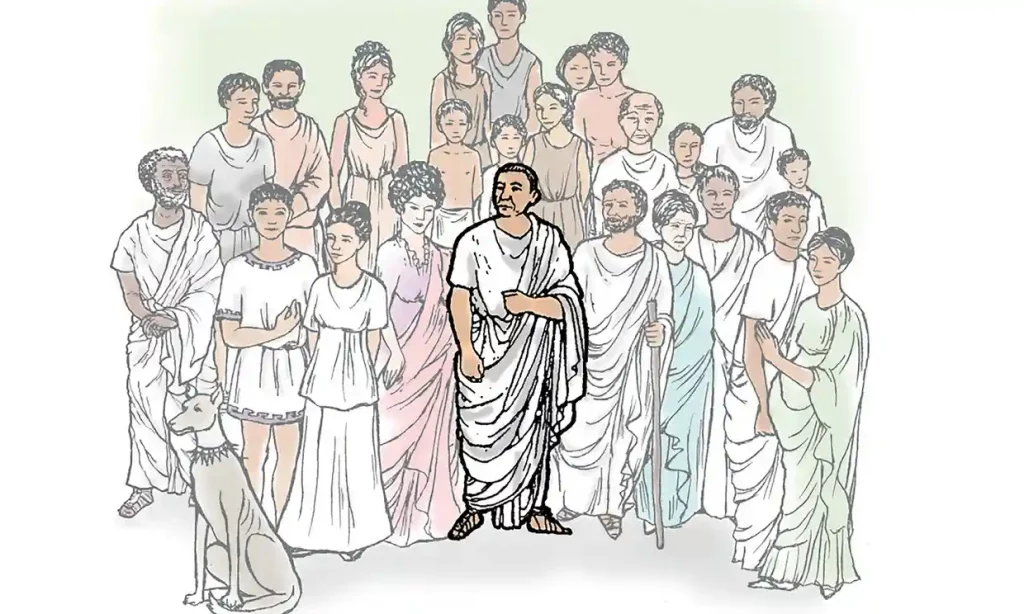I’m always a little bit behind the curve when it comes to technology. If you’re looking for future predictions, I am definitely not the person to come to. You’re looking at the woman who said that texting would never take off and who confidently remarked in 1998 that the internet “didn’t sound particularly useful.”
Fast-forward to the end of 1999 and I was surfing like a Californian, thanks to a fellow student on my PGCE course. He sat down next to me one day and issued a statement which – on honest reflection – may have had more impact on my life than anything I read in my 8 years at university. “I’ve discovered a great new Search Engine,” he said. “It’s called Google.”
Now I didn’t know what a Search Engine was and my knowledge of computers to date had extended to word-processing (remember WordPerfect?) and the use of a CD Rom. I had been given an email address, which one accessed by logging into Telnet and navigating a series of processes so tedious and clunky that I really couldn’t imagine why anyone would wish to make use of it. Then Matthew introduced me to Google and the rest, as they say, is history.
So this week – around 6 months after it was launched, I took a look at Chat GPT for the first time. For the uninitiated, Chat GPT is a free chatbot which utilises artificial intelligence. It was developed by a company called Open AI and launched into the world at the end of November 2022. In summary, you can ask it questions and it will answer them for you, drawing on the internet for information. So what’s different for the user from using a super-clever search engine such as Google, you may ask? (I certainly did). Well, Chat GPT will generate a lengthy response to your question, written in whatever style-register you ask it to mimic.
Chat GPT’s ability to produce complex and extended verbal responses in a particular vocal register has caused a great deal of consternation in education, with teachers realising just how easy it now is for students to ask their computer to produce an alarmingly convincing response to an essay question. A student can simply type their essay question into the system (“what were the causes of the First World War?”) and Chat GPT will generate an essay-style response. The more information you give the system, the better and more useful it will be to you. For example, you can give it a word limit and you can ask it to pitch its response at a particular kind of audience. The system has also caused some wry consternation and a bit of self-reflection amongst journalists, following the news that The Irish Post was forced to withdraw an Op Ed arguing that fake tan is racist; the article turned out to be AI-generated and was submitted as genuine by someone in an undeniably successful bid to make the editors at the publication look foolish. The article was titled Irish women’s obsession with fake tan is problematic and its opening line read “Dear Irish women, we need to talk about fake tan.” Well played, chatbot. Well played.
As so often, I do find myself being thankful that this kind of technology was not available to me when I was younger and learning how to construct an argument or write persuasively “the hard way” – by actually doing it myself. Where Chat GPT will take us in terms of the future of essay, speech and Op Ed writing as a skill and as a means of testing knowledge I have no idea. I’m jolly glad it’s not my problem. It’s all a little overwhelming and makes me want to lie down in a darkened room for a while. Perhaps I shall do so, and Chat GPT can finish the rest of this blog post for me.
Given the inescapable fact that Chat GPT and its ilk are here to stay, I dived in with some consternation but with also a little glimmer of excitement that I might be at the point of reliving my Google moment in 1999. Could Chat GPT be as life-changing as that discovery was? Well, I am here to tell you that the answer is potentially yes.
Given the truly abysmal state of Google Translate, I was highly dubious at the notion that Chat GPT could generate accurate Latin. Well, it can and it does. Moreover, you can give it perameters, which makes it fantastically useful as a teacher-tool. You can ask it to write you a passage of Latin based on a particular story and instruct it to make the passage suitable for GCSE candidates: for example, “I need a passage of Latin, around 100 words, suitable for GCSE students, based on the story of Claudius Pulcher”. It can do that! You can ask it to generate a series of sentences to practise a particular grammatical construction: for example, “write me 20 Latin sentences using the ablative absolute, suitable for GCSE students”. It can do that too!
One thing that I have not yet fully established is how to force it to use only the GCSE vocabulary, and this brings me to the biggest complaint that I (and others) have about Chat GPT in its current form: it presents incomplete, dubious or frankly false information with the confident swagger of a scruffy blond Etonian. It doesn’t tell you what it doesn’t know, and this – given the open availability of the system – is somewhat alarming. For example, when I asked it to create a passage suitable for GCSE candidates using only the OCR GCSE vocabulary list, it claimed to have done so. I pointed out that a particular word was not on the GCSE list. “Apologies!” it said. “Here is the passage again, with that corrected.” It then produced the passage again, with that word replaced by another one that was not on the GCSE list. I pointed this out also, and again the system responded in a manner that suggested it was fixing the error. I then pointed out several other words that were not on the list and eventually it admitted that it was not able to consult “outside sources” such as the OCR GCSE list. Hmmmm. By the way, before anyway thinks that I’ve lost it, I am fully aware that yes, I was having a conversation with a computer-generated entity: the weirdness of that does not escape me.
I discovered through colleagues on the Twitter hivemind that it was possible to put links into Chat GPT, so I gave it a link to the OCR GCSE list. I also tried experimenting with pasting the whole list into the the chat box and asking it to use only that vocabulary. The latter seems to generate the best results and – in terms of creating a series of practice sentences – pretty much solves the problem if you work within tight perameters; for example, ask it to generate some GCSE-level sentences practising adjectival agreement, and give it the adjectives on the GCSE vocabulary list. It still utlises a wide range of vocabulary when creating an extended passage, so a teacher would still require a knowledge of (or the patience to check) all of the words listed by OCR, or whatever other examination body you are working to.
As for the accuracy of the Latin? It is extraordinarily good. Given that I work with beginning students and candidates up to GCSE level, I grant you that I am not asking it to do anything overly complex, but this is still a giant leap from anything else we have seen in my lifetime. Some sentences I felt were a little unnatural and would wish to tweak, but grammatical errors are minimal. This is borderline miraculous given that up until now the best we have had has been Google Translate. Nothing prior to Chat GPT has been even bordering on accurate and therefore useful in any way.
So, can Chat GPT write in Latin? The answer is that it can. In the hands of an expert teacher it is going to be a genuinely brilliant tool that will save infinite amounts of time and will assist in the production of high-quality resources. Chat GPT will produce the bare bones of a worksheet in seconds, leaving the expert teacher free to develop, tweak, personalise and perfect their new resource. This is a genuine godsend. It has the potential to mean that every new resource a teacher writes will be better, for it will already have been through much of the fine-tuning process which normally relies on students acting as guinea pigs. In terms of the hours it will save us, I am still slightly in shock.







